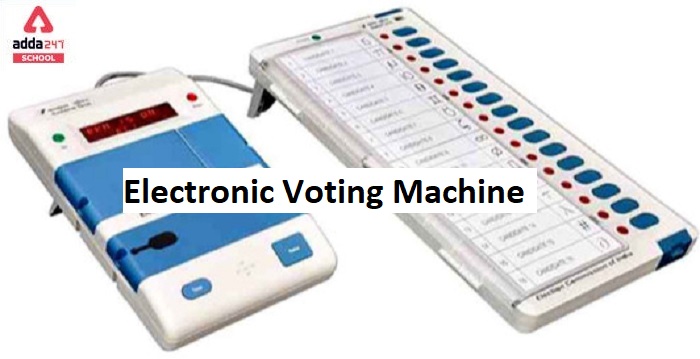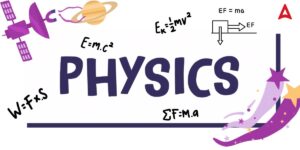What is the Full Form of EVM?
EVM is an abbreviation for Electronic Voting Machine. It is an electrical machine used to conduct electronic voting. It was recently utilised in state elections conducted in five Indian states in 2017. In India, technology has eliminated paper ballots in local, state, and general (parliamentary) elections. Given the large scale of India’s population, it is reasonable to say that EVMs are the most excellent way to avoid election malpractices. Also, Electronic Voting Machine or EVM supports a smooth election with technological advancement.
History of EVM
- M. B. Haneefa designed the first voting machine in India in 1980. The original design of this machine was displayed to the public at six separate Government Exhibitions conducted around Tamil Nadu.
- EVMs were initially utilised in the election of the Paravur constituency in Kerala in 1982 for a small number of polling stations.
- The Election Commission of India commissioned the EVMs in 1989, in partnership with Electronics Corporation of India Limited.
Origin of EVM(Electronic Voting Machine)
In the 1889 New York election, the first mechanical voting machine was patented. Over the passing years, the system of casting votes through mechanical voting machines gained acceptance everywhere and the EVM acronym became increasingly familiar to individuals.
In the California elections of 1965, votomatic punched cards with holes were introduced. The casting of votes through votomatic punched cards was the modern and faster way of a communication system that gained popularity because it can register the name of voters with ease. Over the year’s EVM system has replaced the ballot paper system in India.
Design of EVM
An Electronic Voting Machine is made up of two components, which are connected by a five-meter wire. The two components of the Electronic Voting Machine are the control unit and the ballot unit.
Control Unit of EVM: The control unit is located within the voting station or the presiding officer.
Ballot Unit of EVM: The ballot unit is located within the voting compartment.
Process of Casting Votes by EVM: The balloting device features blue buttons that are horizontally labelled with party icons and candidate names. The control device contains a “Ballot” button. The voter voted by pushing the chosen blue button on the balloting equipment. As soon as the final voter votes, the polling officer presses the “Close Button,” and the EVM no longer accepts votes. After the election, the balloting unit is detached from the Control Unit and stored separately.
Advantages of EVM
- EVM is a cost-effective approach since each polling location requires only one vote paper or document, and the transportation expenses of EVM are cheaper than those of traditional ballot boxes.
- It may be transported from one area to another with ease.
- More individuals will be able to vote in less time.
- The data can be saved for future reference for an extended length of time.
- The EVM run on batteries so the election can be held in areas without electricity.
- EVM discarded the invalid and doubtful votes.
- EVM is faster in computing votes than the traditional voting approach. It saves time and money for the election conducting body.
- It is an environmentally responsible strategy because casting votes through EVM does not require paper therefore it saves trees.
Uses of EVM in India
Here we have given the usage of Electronic Voting Machine in India. Check the points listed below:
- Previously the elections are held with the use of ballot papers. The candidates cast their votes by stamping the icon of the favourable candidate on the ballot paper. The ballot paper is a paper sheet containing the list of contending candidates with their party symbol in front of their names.
- The EVMs will have the name of the candidate’s party, party symbol, and, candidate names. To cast votes through EVM, the voters have to press the button given in front of their favoured candidate’s name or party symbol and the vote of candidates gets recorded. After polling is completed, the EVMs are sealed and transported to a secure location. On a certain day, all EVMs in a constituency are opened and the votes cast for each candidate are counted.
- In the 2004 general elections, EVMs were deployed for the first time in India. When EVMs were used in the 2004 Lok Sabha elections, they saved around 1,50,000 trees. If EVMs had not been utilised in the 2004 Lok Sabha elections, this many trees would have been lost in order to generate 8,000 tonnes of paper for printing the ballot papers.
Conclusion: Considering the huge demography of India, EVM is the best solution. The EVM saves the trees and reduces the usage of papers while casting votes. EVM is run on a battery so it can reach remote areas where electricity is not available. The EVM reduces the cost of Election officers and discarded the fake votes and makes voting efficient. Therefore, we can say that EVM is the best to conduct elections in India.
EVM Full Form in Hindi
ईवीएम का फुल फॉर्म क्या है?
EVM इलेक्ट्रॉनिक वोटिंग मशीन का संक्षिप्त रूप है। यह इलेक्ट्रॉनिक वोटिंग करने के लिए उपयोग की जाने वाली एक विद्युत मशीन है। इसका हाल ही में 2017 में पांच भारतीय राज्यों में हुए राज्य चुनावों में उपयोग किया गया था। भारत में, प्रौद्योगिकी ने स्थानीय, राज्य और सामान्य (संसदीय) चुनावों में पेपर मतपत्रों को समाप्त कर दिया है। भारत की आबादी के बड़े पैमाने को देखते हुए, यह कहना उचित होगा कि चुनावी कदाचार से बचने के लिए ईवीएम सबसे बेहतरीन तरीका है। इसके अलावा, इलेक्ट्रॉनिक वोटिंग मशीन या ईवीएम तकनीकी प्रगति के साथ सुचारू चुनाव का समर्थन करती है।
EVM ka Full form
एम. बी. हनीफा ने 1980 में भारत में पहली वोटिंग मशीन डिजाइन की थी। इस मशीन के मूल डिजाइन को तमिलनाडु के आसपास आयोजित छह अलग-अलग सरकारी प्रदर्शनियों में जनता के लिए प्रदर्शित किया गया था।
ईवीएम का उपयोग शुरू में केरल में परावूर निर्वाचन क्षेत्र के चुनाव में 1982 में कम संख्या में मतदान केंद्रों के लिए किया गया था।
भारत के चुनाव आयोग ने 1989 में इलेक्ट्रॉनिक्स कॉर्पोरेशन ऑफ इंडिया लिमिटेड के साथ साझेदारी में ईवीएम को चालू किया।
ईवीएम की उत्पत्ति (इलेक्ट्रॉनिक वोटिंग मशीन)
1889 के न्यूयॉर्क चुनाव में, पहली यांत्रिक वोटिंग मशीन का पेटेंट कराया गया था। बीतते वर्षों में, यांत्रिक वोटिंग मशीनों के माध्यम से वोट डालने की प्रणाली ने हर जगह स्वीकृति प्राप्त की और ईवीएम का संक्षिप्त नाम व्यक्तियों के लिए अधिक परिचित हो गया।
1965 के कैलिफ़ोर्निया चुनावों में, छेद वाले वोटोमैटिक पंच कार्ड पेश किए गए थे। वोटोमैटिक पंच कार्ड के माध्यम से वोट डालना संचार प्रणाली का आधुनिक और तेज तरीका था जिसने लोकप्रियता हासिल की क्योंकि यह मतदाताओं के नाम को आसानी से दर्ज कर सकता है। वर्षों से भारत में ईवीएम प्रणाली ने बैलेट पेपर सिस्टम को बदल दिया है।
ईवीएम का डिजाइन
इलेक्ट्रॉनिक वोटिंग मशीन दो घटकों से बनी होती है, जो पांच मीटर के तार से जुड़े होते हैं। इलेक्ट्रॉनिक वोटिंग मशीन के दो घटक नियंत्रण इकाई और मतपत्र इकाई हैं।
ईवीएम की नियंत्रण इकाई: नियंत्रण इकाई मतदान केंद्र या पीठासीन अधिकारी के भीतर स्थित होती है।
ईवीएम की बैलेट यूनिट: बैलेट यूनिट वोटिंग कंपार्टमेंट के भीतर स्थित होती है।
ईवीएम द्वारा वोट डालने की प्रक्रिया: बैलेट डिवाइस में नीले बटन होते हैं जो क्षैतिज रूप से पार्टी आइकन और उम्मीदवार के नाम के साथ लेबल किए जाते हैं। नियंत्रण उपकरण में “बैलट” बटन होता है। मतदाता ने मतदान उपकरण पर चुने हुए नीले बटन को दबाकर मतदान किया। जैसे ही अंतिम मतदाता वोट करता है, मतदान अधिकारी “क्लोज़ बटन” दबाता है और ईवीएम अब वोट स्वीकार नहीं करता है। चुनाव के बाद, बैलेट यूनिट को कंट्रोल यूनिट से अलग करके अलग से स्टोर किया जाता है।
ईवीएम के फायदे
ईवीएम एक लागत प्रभावी तरीका है क्योंकि प्रत्येक मतदान स्थल के लिए केवल एक वोट पेपर या दस्तावेज की आवश्यकता होती है, और ईवीएम का परिवहन खर्च पारंपरिक मतपेटियों की तुलना में सस्ता होता है।
इसे आसानी से एक क्षेत्र से दूसरे क्षेत्र में ले जाया जा सकता है।
कम समय में ज्यादा लोग वोट डाल सकेंगे।
डेटा को भविष्य के संदर्भ के लिए विस्तारित अवधि के लिए सहेजा जा सकता है।
ईवीएम बैटरी से चलती है इसलिए बिना बिजली वाले क्षेत्रों में चुनाव हो सकते हैं।
ईवीएम ने अवैध और संदिग्ध वोटों को खारिज कर दिया।
ईवीएम पारंपरिक मतदान दृष्टिकोण की तुलना में वोटों की गणना करने में तेज है। यह चुनाव संचालन निकाय के लिए समय और धन बचाता है।
यह पर्यावरण की दृष्टि से जिम्मेदार रणनीति है क्योंकि ईवीएम के माध्यम से वोट डालने के लिए कागज की आवश्यकता नहीं होती है इसलिए यह पेड़ों को बचाता है।
भारत में ईवीएम का उपयोग
यहां हमने भारत में इलेक्ट्रॉनिक वोटिंग मशीन के उपयोग के बारे में बताया है। नीचे सूचीबद्ध बिंदुओं की जाँच करें:
पहले चुनाव बैलेट पेपर के जरिए होते थे। उम्मीदवारों ने बैलेट पेपर पर अपने अनुकूल उम्मीदवार के आइकन पर मुहर लगाकर अपना वोट डाला। बैलेट पेपर एक पेपर शीट होता है जिसमें दावेदार उम्मीदवारों की सूची उनके नाम के आगे पार्टी चिन्ह के साथ होती है।
ईवीएम में उम्मीदवार की पार्टी का नाम, पार्टी का चुनाव चिन्ह और उम्मीदवार का नाम होगा। ईवीएम के माध्यम से वोट डालने के लिए मतदाताओं को अपने पसंदीदा उम्मीदवार के नाम या पार्टी के चिन्ह के सामने दिए गए बटन को दबाना होता है और उम्मीदवारों का वोट रिकॉर्ड हो जाता है। मतदान पूरा होने के बाद, ईवीएम को सील कर सुरक्षित स्थान पर ले जाया जाता है। एक निश्चित दिन, एक निर्वाचन क्षेत्र में सभी ईवीएम खोली जाती हैं और प्रत्येक उम्मीदवार के लिए डाले गए मतों की गणना की जाती है।
2004 के आम चुनावों में, भारत में पहली बार ईवीएम को तैनात किया गया था। 2004 के लोकसभा चुनावों में जब ईवीएम का इस्तेमाल किया गया था, तो उन्होंने लगभग 1,50,000 पेड़ बचाए थे। यदि 2004 के लोकसभा चुनावों में ईवीएम का उपयोग नहीं किया गया होता, तो मतपत्रों की छपाई के लिए 8,000 टन कागज बनाने के लिए इतने सारे पेड़ नष्ट हो जाते।
निष्कर्ष: भारत की विशाल जनसांख्यिकी को देखते हुए, ईवीएम सबसे अच्छा समाधान है। ईवीएम पेड़ों को बचाती है और वोट डालते समय कागजों के उपयोग को कम करती है। ईवीएम को बैटरी से चलाया जाता है ताकि यह दूरदराज के इलाकों तक पहुंच सके जहां बिजली उपलब्ध नहीं है। ईवीएम चुनाव अधिकारियों की लागत को कम करता है और नकली वोटों को त्याग देता है और मतदान को कुशल बनाता है। इसलिए, हम कह सकते हैं कि ईवीएम चुनाव कराने के लिए सबसे अच्छी है
Related Post:
| CBSE Full Form | ICSE Full Form |
| CEO Full Form | SOP Full Form |
| AM PM �Full Form | ACP Full Form |
| TRF Full form in Banking | DCA full form |
| KRA Full Form | CGPA Full Form |
| CFL Full Form | CID Full Form |
| BPO Full Form | CAG Full Form |
| RPC Full Form | OTT Full Form |









 CUET Agriculture Syllabus 2026, Pattern,...
CUET Agriculture Syllabus 2026, Pattern,...
 CUET Maths Syllabus 2026 PDF Download - ...
CUET Maths Syllabus 2026 PDF Download - ...
 CUET Physics Syllabus 2026 for PCB and P...
CUET Physics Syllabus 2026 for PCB and P...














